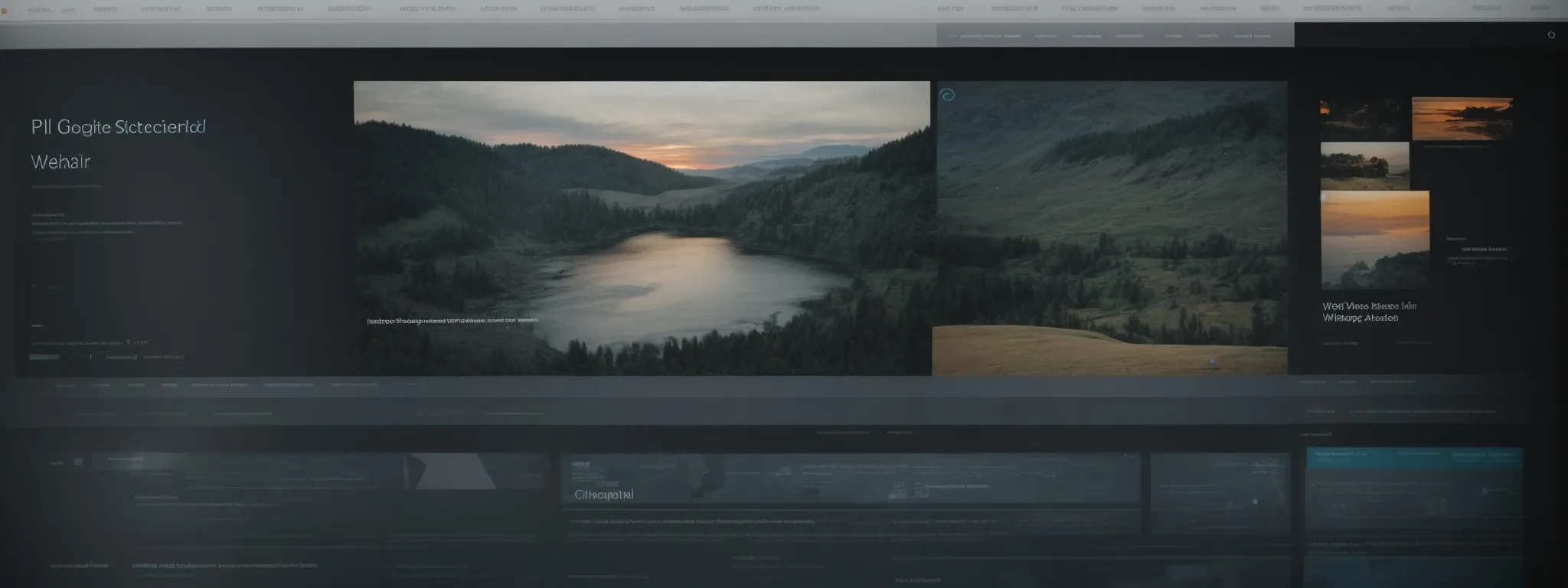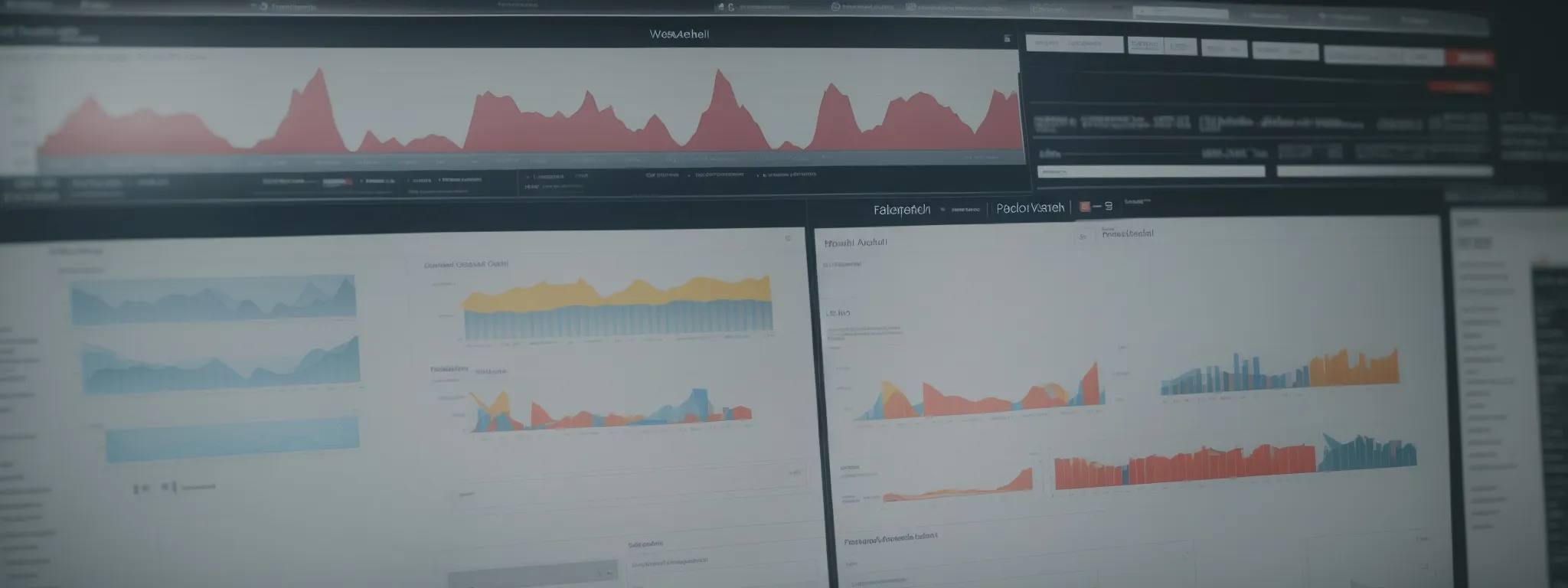Maximizing SEO Impact: The Power of Headings
Maximizing SEO Impact: The Power of Headings In the nuanced arena of search engine optimization, the strategic deployment of header tags is tantamount to guiding a reader […]
Maximizing SEO Impact: The Power of Headings
In the nuanced arena of search engine optimization, the strategic deployment of header tags is tantamount to guiding a reader through the labyrinthine corridors of web content.
These HTML elements not only scaffold the structure of your content for screen reader users but also serve as beacons for search engines, illuminating the relevancy and hierarchy of information on your page.
Effective headings are more than mere HTML code; they are the pivotal points that can elevate both the user experience and a site’s search engine standing.
With a mastery over H1, H2, and H3 tags, organizations like LinkGraph transcend the basics, crafting headings that fuse SEO savvy with user-centric clarity.
Keep reading to discover how precise heading optimization can significantly boost your SEO rank and shepherd searchers to your virtual doorstep.
Key Takeaways
- Headings From H1 to H3 Are Not Just Navigational Aids but Also Crucial for Aligning Web Content With User Intent and Search Engine Algorithms
- LinkGraph’s SEO Services Optimize Headings for Readability and Keyword Integration, Balancing User Experience With Search Visibility
- Utilizing a Single H1 Tag Per Page Reinforces Thematic Focus and Aids Both Search Engines and Users in Content Comprehension
- Subheadings Like H2 and H3 Are Strategic Signposts That Help Break Complex Content Into Manageable Sections and Improve SEO Outcomes
- Advanced SEO Tools Like LinkGraph’s SearchAtlas Provide Metrics to Fine-Tune Heading Strategies for Enhanced Search Performance
Understanding the Role of Headings in SEO

In the dynamic realm of Search Engine Optimization, headings are far more than mere signposts guiding readers through the terrain of web content; they are pivotal in orchestrating a symphony of factors that elevate SEO rank.
This discussion illuminates the multifaceted role of header tags—from the H1 header right through to H2, H3, and beyond—in auspiciously influencing search rankings, fostering polished user experiences, and delineating the pertinence of content to searchers’ queries.
With unwavering attention to the interplay between headings and these critical aspects, organizations can unlock the full potential of their SEO strategy, sculpting an online presence that resonates with both search engines and the audience they aspire to engage.
Exploring How Headings Influence Search Rankings
At the intersection of user intent and search engine algorithms, headings such as the H1 header, H2, and H3 operate as crucial beacons. They not only steer user navigation but also convey the hierarchy and relevance of content to the algorithms that dictate search engine result pages:
The strategic deployment of an H1 header can signal the primary focus of a web page, potentially boosting the SEO rank of the content for specific search queries. Subsequent headings, like H2 and H3, further sculpt the thematic landscape, enabling search engines to parse the organization of ideas and topics effectively.
| HTML Element | Importance in SEO | Impact on User Experience |
|---|---|---|
| H1 Header | Crucial for denoting primary topic | Guides the reader’s initial attention |
| H2 Subheader | Supports thematic structuring | Breaks content into digestible sections |
| H3 | Helps detail subsections of content | Further clarifies content flow for readers |
Unlocking the Connection Between Headings and User Experience
Headings serve as more than visual cues; they enhance the legibility and flow of content, establishing a roadmap that improves the overall user experience. By providing clear, descriptive titles and subtitles with header tags such as H1, H2, and H3, LinkGraph ensures readers effortlessly navigate the layers of information, which, in turn, can lower bounce rates and foster deeper engagement with the material presented.
In the hands of the proficient team at LinkGraph, headings become formidable tools that marry SEO strategy with user satisfaction. The thoughtful construction of headings guides visitors through product pages, making the journey from page title to bottom-line action intuitive—a testament to the synergy of SEO best practices and the pursuit of an exceptional user experience.
Identifying the Relationship Between Headings and Content Relevance
Headings do not merely serve as anchors for readers; they are essential in articulating the relevance of web content to search engines. The provision of succinct and keyword-rich header text, particularly within the H1 and H2 tags, can significantly augment content’s alignment with user intent, thereby enhancing its visibility in search engine result pages.
LinkGraph harnesses this principle by meticulously crafting header tags to mirror the searchers’ quest for information. The alignment between header text and the core content that follows fortifies the web page’s message, ensuring that search engines and users alike recognize the utility and value of the content offered:
| Header Tag | SEO Relevance | Content Alignment |
|---|---|---|
| Page Title (H1) | Essential for search engine recognition | Defines the overarching topic |
| Subheaders (H2, H3) | Boosts thematic clarity for search algorithms | Organizes and refines subtopics |
Crafting Headings That Capture Attention and Rank

In the meticulous craft of optimizing for search engines, the finesse with which one constructs headings is a crucial piece of the puzzle.
Within the landscape of SEO, the headings wield the power to seize attention, captivate an audience, and enhance search engine ranking when executed with precision.
They demand a balance of creativity and clarity that resonates both with the discerning algorithms of search engines and the inquiries of a target audience.
Expertly aligning keyword integration without compromising on readability, and evading the pitfalls synonymous with SEO-driven heading creation, requires a nuanced understanding of the factors at play.
This section delves into nurturing headings that not only engage but also perform on the competitive stage of SERPs.
Balancing Creativity With Clarity for Effective Headings
In the delicate interplay of SEO and user engagement, headings must strike a harmonious balance between ingenuity and directness. LinkGraph’s approach to crafting headings ensures they enchant the reader with their originality while maintaining clarity, thereby aiding in the navigation of content and enhancing its suitability for both the user and the search engine.
Drawing on the power of precise language and compelling narrative, these headings consummate the marriage of creativity and clarity without sacrificing the SEO impact. Each header constructed by LinkGraph functions as a beacon, deftly guiding visitors through the content landscape and simultaneously bolstering the page’s visibility amidst the crowd of search results.
Incorporating Target Keywords Without Sacrificing Readability
In the sophisticated realm of Search Engine Optimization, the incorporation of keywords within headings is a critical endeavor, one that must be carefully calibrated to preserve the natural tone and readability of the web page. LinkGraph’s expertise in SEO services ensures that each heading is not only rich with targeted keywords but also maintains an effortless flow that enhances reader comprehension and engagement.
Efficiency in keyword placement stands as a testament to LinkGraph’s dedication to both search engine criteria and user accessibility. By embedding keywords seamlessly into header text, the organization strengthens the SEO rank potential without detracting from the user’s journey through informative and engaging content.
Avoiding Common Pitfalls When Writing Headings for SEO
Navigating the nuances of SEO can be akin to avoiding hidden traps on the path to prominence in search engine rankings. To sidestep common missteps, it’s imperative that LinkGraph’s SEO services emphasize originality and specificity within headings, avoiding generic descriptors that fail to differentiate content in the eyes of search engines and users alike.
Another crucial consideration lies in the precise application of header tags that meet Web Content Accessibility Guidelines, ensuring an equitable user experience. By creating headings that are both informative and easy for screen reader users to interpret, organizations foster accessibility while enhancing SEO effectiveness.
The Strategic Use of H1 Tags for SEO Dominance

The artistry of Search Engine Optimization (SEO) hinges on numerous factors, with the judicious application of the H1 tag to web content holding paramount importance.
This singular HTML element often represents the entryway to a brand’s narrative, setting the stage for what searchers can anticipate from the page.
Mastery in leveraging this crucial component is evident in LinkGraph’s nuanced SEO approach, which fortifies the sovereignty of their client’s digital domain.
The forthcoming discourse will unfold the best practices for harnessing the H1 tag, elucidate the rationale behind employing a singular H1 tag per page, and explore the adaptable applications of H1 variations to cater to the diverse array of content types.
Each strand of this conversation weaves into the fabric of a robust SEO strategy, designed to captivate and climb the search engine ranking ladder with strategic precision.
Best Practices for Using the H1 Tag Effectively
Implementing the H1 tag with precision is fundamental for an authoritative SEO strategy. LinkGraph distinguishes itself by advocating for a singular, impactful H1 header that succinctly encapsulates the core subject of a web page: It crystalizes the primary focus, making it instantly clear to both search engines and users what the page content entails.
| SEO Component | Strategic Execution |
|---|---|
| Singular H1 Tag | Secures topical relevance and maintains content focus |
| Clarity and Relevance | Facilitates user understanding and search engine indexing |
Moreover, LinkGraph ensures the H1 tag is optimized by incorporating relevant key phrases that align with user intent and search patterns. By striking a balance between keyword placement and natural readability, the H1 tag acts as a powerful lever, amplifying the page’s relevance and aiding in bolstering the site’s visibility within the SERPs.
Understanding the Significance of a Single H1 Per Page
The prevailing wisdom in SEO dictates a disciplined approach to headings, where a single H1 tag per page signifies clear thematic focus, an approach ardently championed by LinkGraph. This strategy underscores the importance of a strongly defined topic, directly assisting search engines and users in discerning page content swiftly and effectually.
LinkGraph’s meticulous SEO services illustrate that a singular, standout H1 header not only reinforces the primary subject matter but also plays an integral role in anchoring the entire narrative structure of the page. This method contributes to a coherent user journey from the H1 header to the concluding call to action, fostering a cohesive user experience and bolstering search engine results positioning.
Navigating H1 Variations for Different Types of Content
Adapting the use of H1 tags to accommodate various types of content is a nuanced aspect of SEO optimization, one that LinkGraph excels in. Recognizing that product pages, blog posts, and case studies each bear unique requirements, the team tailors H1 variations to align with the distinct context and goals of the content, ensuring that the primary header resonates with both search engines and users.
For instance, with web content accessibility in mind, LinkGraph crafts H1 tags for accessible websites that facilitate not only SEO but also comprehension for screen reader users. This commitment to inclusive, strategic header use underscores the importance of adaptable SEO services that serve the dual purpose of amplifying reach and enhancing user experience.
Leveraging H2 and H3 Tags for Hierarchical Clarity

Subheadings are the scaffolding of web content, providing a robust structure that affords clarity and order.
The effective use of H2 and H3 tags transcends mere formatting; it is integral to constructing a logical content flow that takes the complexity of topics and renders them into accessible, digestible blocks of information.
This judicious deployment of subheadings supports a seamless navigation experience, diligently serving the dual audience of discerning users and methodical search engines.
It is a strategic element in the arsenal of Search Engine Optimization, enabling web pages to impart knowledge effortlessly and rank with intention in search results.
Creating Logical Content Flow With Subheadings
Subheadings act as critical signposts, parsing a narrative into manageable segments that assure clarity of understanding for the reader. When LinkGraph wields H2 and H3 tags, each swath of text is meticulously organized, enabling visitors to grasp the content’s buoys and perceive the intended message effortlessly.
The strategic placement and crafting of H2 and H3 tags by LinkGraph not only enhance the logical flow of information but also cater to search engines’ predilection for structured data. This layered approach to content presentation empowers search engines to discern topic relevance with precision, thereby optimizing the search engine optimization impact of each web page.
Using Subheadings to Break Down Complex Topics
LinkGraph adeptly employs H2 and H3 tags to dissect intricate subject matter, transforming potential complexity into accessible wisdom for both users and search engines. Subheadings stand as critical junctures, marking the path users tread from one concept to the next, bridging ideas with a fluidity that underpins user retention and understanding.
The strategic use of subheadings by LinkGraph not only structures web content for enhanced readability but anchors pivotal SEO keywords, bolstering the thematic strength which search engines evaluate. By breaking topics into subcomponents, these headings ensure that both search engine crawlers and users can consume and comprehend hefty topics with greater ease, thereby amplifying the page’s potential to scale the search results hierarchy.
Enabling Easier Navigation for Both Users and Search Engines
The adept utilization of H2 and H3 tags is not a mere exercise in aesthetic formatting; it is a strategic imperative that facilitates navigational ease. LinkGraph’s meticulous application of these subheadings clarifies content architecture, allowing both search engines and users to move through information smoothly: a clear path woven through the textual landscape encourages deeper exploration and interaction.
LinkGraph navigates the delicate balance between user-centric design and search engine requirements, crafting an informational hierarchy that serves dual purposes: enabling users to find the information they seek with minimal friction and aiding search engines in indexing the wealth of content precisely:
- Subheadings create a narrative thread, guiding readers through a logical progression of ideas.
- Search engines value the structured data, rewarding well-organized content with higher visibility in search results.
- Smooth navigation is correlated with improved user experience, which can lead to increased time on site and conversion rates.
The Impact of Header Tags Beyond H1, H2, and H3

As the spotlight of Search Engine Optimization usually shines on the prominent H1, H2, and H3 tags, the subtler nuances of effective SEO include the strategic use of lesser-discussed header tags such as H4, H5, and H6.
Mastering the deployment of these lower-level headings is instrumental in sculpting a layered and nuanced content strategy that underscores the depth and breadth of a website’s content.
The forthcoming discussion ventures into the rationale behind these tags, demonstrating their adept use for elevating the fine texture of web content and enhancing the user journey within the depth of topics presented.
Delving Into the Purpose of H4, H5, and H6 Tags in SEO
The exploration into the nuanced domain of SEO reveals that H4, H5, and H6 tags, although less prominent than their counterparts, are instrumental in contributing to a detailed and nuanced content hierarchy. LinkGraph employs these tags to add additional layers of organization to content, augmenting the user’s ability to compartmentalize and digest complex information, which in turn potentially improves SEO outcomes.
Within the artful curation of web content, the use of H4, H5, and H6 tags presents an opportunity to refine the SEO strategy further by elucidating ancillary points and supporting details that enrich the primary narrative. LinkGraph skillfully utilizes these HTML elements to strengthen the thematic threads within the content, enhancing search engine crawlers’ comprehension and providing pathways for a deeper user interaction with the text.
When and How to Use Lower-Level Headings for Maximum Effect
Lower-level headings such as H4, H5, and H6, when deftly applied, can introduce a refined structure that captivates both the user and the search engine algorithm. LinkGraph advocates employing these tags to compartmentalize data even further, methodically breaking down comprehensive discussions into skimmable, digestible points that enhance the web content’s granularity and SEO finesse:
- Utilize H4 to introduce secondary points that support H2 and H3 sections, bolstering the complexity of the argument.
- Apply H5 for detailed bulletins or specifications that add depth to topics within H4s.
- Reserve H6 for niche cross-references or data labels that enrich content and metadata complexity.
LinkGraph harnesses these tags to enrich the narrative, creating an intricate web of information that guides users down a path of discovery. By systematically categorizing content, this approach not only elevates the organization of the document but also strategically places SEO-driven anchor text and keywords, thereby amplifying the impact on search engine result pages and user comprehension
Understanding How Depth of Content Can Be Showcased With Headings
LinkGraph’s astute use of header tags extends to showcasing the depth of content within a website’s framework. Headers like H4, H5, and H6 are vital in detailing the nuances of a topic, allowing a thorough exploration that appeals to an audience dedicated to in-depth understanding.
This multi-tiered approach not only embellishes the richness of content but also outlines a clear, enriched path for search engines to evaluate the various layers of information. Meticulously categorized and well-executed, effective headings by LinkGraph represent the complexity of knowledge while maintaining a keen SEO impact.
Measuring the SEO Success of Your Heading Strategy

As digital presence becomes synonymous with commercial success, the thrust of a well-formulated SEO strategy is increasingly reliant on the meticulous optimization of website headings.
Within this intricate venture of search engine ranking, the assessment of heading effectiveness is paramount, propelling businesses to delve into the robust analytics tools and performance data pivotal for discerning the impact of their heading structures.
It is, therefore, crucial for organizations to engage in a continual cycle of evaluation, fine-tuning, and enhancement of heading elements, ensuring they maintain an upward trajectory in SEO performance and sustain long-term growth in an ever-evolving digital landscape.
Tools and Metrics for Analyzing the Effectiveness of Headings
In the comprehensive scope of refining heading strategies, advanced tools like LinkGraph’s SearchAtlas SEO tool come to the fore, offering actionable insights for assessing header efficacy. These sophisticated analytics platforms calculate key performance indicators such as click-through rates (CTR) and search rankings, showcasing the tangible outcomes headings have in aligning with user searches and driving traffic.
Metrics such as page views, average time on page, and bounce rates become critical barometers in gauging the resonance of headings with an intended audience. By implementing LinkGraph’s technologies, organizations gain the ability to quantify the impact of their header text on user engagement and iterate their SEO strategies for maximal effectiveness in search result listings.
Adjusting Your Headings Based on SEO Performance Data
Grasping the intricacies of SEO performance can be transformative when applied to the strategic adjustments of headings. Entities utilize the data harvested from tools like LinkGraph’s SearchAtlas to refine header tags, making them more relevant and aligned with evolving search patterns and user behaviors:
| SEO Metric | Heading Adjustment Rationale | Expected Outcome |
|---|---|---|
| CTR (Click-Through Rate) | To enhance the persuasive potential of headings | Increased page visits from SERPs |
| Search Engine Rankings | To align headers with top-performing keywords | Improved visibility in search results |
Emerging from a wealth of performance data, the recalibration of heading elements is executed to optimize visibility and engagement rates. Through the iterative process of SEO refinement, LinkGraph assists in ensuring that each heading is a resonant invitation to the reader, effectively boosting the page’s authoritative standing within search engine hierarchies.
Continuous Improvement of Headings for Sustaining SEO Growth
Attaining peak performance in SEO rankings necessitates a commitment to continuous refinement, particularly in the realm of heading optimization. LinkGraph’s dynamic approach to SEO involves perpetual scrutiny and agile updates to headings, ensuring they pace with algorithmic shifts and trends in user search behavior, guaranteeing sustained growth over time.
LinkGraph’s SEO services underscore the importance of recurrent evaluation of heading strategies within an organization’s SEO toolkit. By actively monitoring heading performance, identified through incisive analytics, the team adeptly adjusts and enriches header tags to maintain alignment with the content’s target audience and search intent, reinforcing the brand’s presence in the digital ecosystem.
Conclusion
In conclusion, harnessing the power of headings is critical for maximizing SEO impact.
Clear and strategic use of H1, H2, and H3 tags not only navigates users effectively through content but also aids search engines in understanding and ranking web pages.
Subsequent headings, H4 through H6, further dissect complex topics and add depth, enhancing user experience and demonstrating content mastery to search engines.
Tools like LinkGraph’s SearchAtlas play a pivotal role in analyzing the effectiveness of headings, enabling data-driven adjustments that align with user interests and search patterns.
As the digital landscape evolves, it’s essential to continuously refine header strategies to maintain and grow SEO performance, ensuring that headings remain effective invitations to readers and powerful indicators of relevance to search engines.














































































